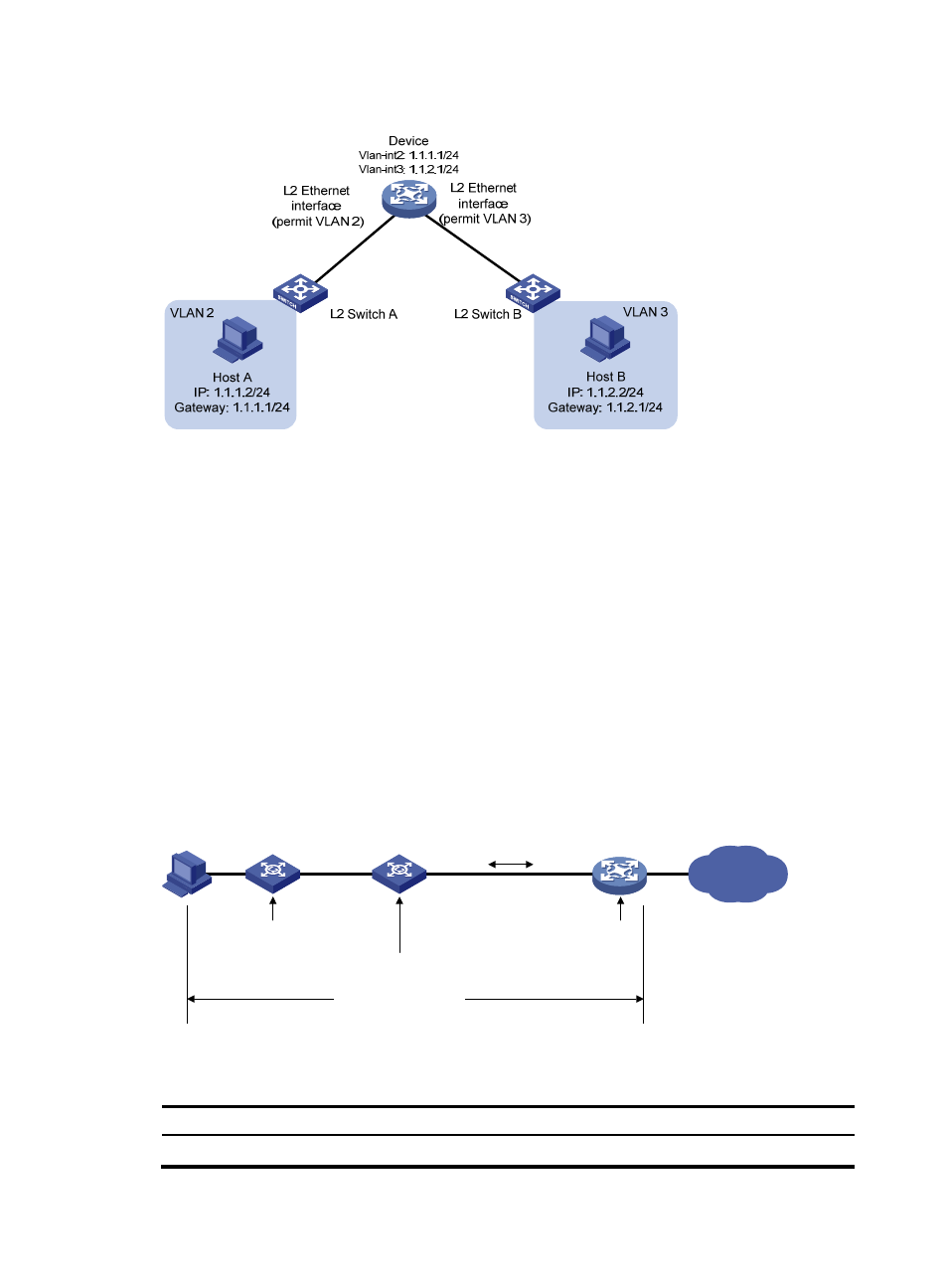Lan-wan communication, Vlan termination configuration task list – H3C Technologies H3C WX3000E Series Wireless Switches User Manual
Page 130

120
Figure 33 VLAN termination for inter-VLAN communication
LAN-WAN communication
Most packets sent out LANs carry VLAN tags, but some WAN protocols such as ATM, Frame Relay, and
PPP cannot recognize VLAN-tagged packets. Therefore, before sending VLAN-tagged packets to a
WAN, the sending port must locally record the VLAN information and remove VLAN tags from the
packets. VLAN termination can help implement this purpose. You can configure VLAN interfaces to
enable LAN-WAN communication.
As shown in
, the VLANs of the customer network are called customer VLANs (CVLANs), and
the VLANs of the service provider network are called service provider VLANs (SVLANs). When a packet
carrying a CVLAN tag enters the service provider network, it is tagged with a SVLAN tag, and
forwarded based on the SVLAN tag. When the packet is to be forwarded to an external WAN, the
gateway (Device) must perform VLAN termination for the packet and remove the two layers of VLAN tags
from the packet before sending the packet to the WAN through synchronous/asynchronous serial port
Serial 5/1.
Figure 34 VLAN termination enables LAN-WAN communication
VLAN termination configuration task list
Task Remarks
Configuring unambiguous QinQ termination
Optional.
WAN
QinQ packlet
S5/1
L 2 Switch A
L 2 Switch B
Device
(PPPoE gateway)
Create a VLAN-
interface to terminate
QinQ packets
Enable QinQ, and add a
SVLAN tag
Add a CVLAN tag
Layer 2 network,
PPPoE connection
- H3C WX5500E Series Access Controllers H3C WX3500E Series Access Controllers H3C WX2500E Series Access Controllers H3C WX6000 Series Access Controllers H3C WX5000 Series Access Controllers H3C LSWM1WCM10 Access Controller Module H3C LSUM3WCMD0 Access Controller Module H3C LSUM1WCME0 Access Controller Module H3C LSWM1WCM20 Access Controller Module H3C LSQM1WCMB0 Access Controller Module H3C LSRM1WCM2A1 Access Controller Module H3C LSBM1WCM2A0 Access Controller Module H3C WA3600 Series Access Points H3C WA2600 Series WLAN Access Points